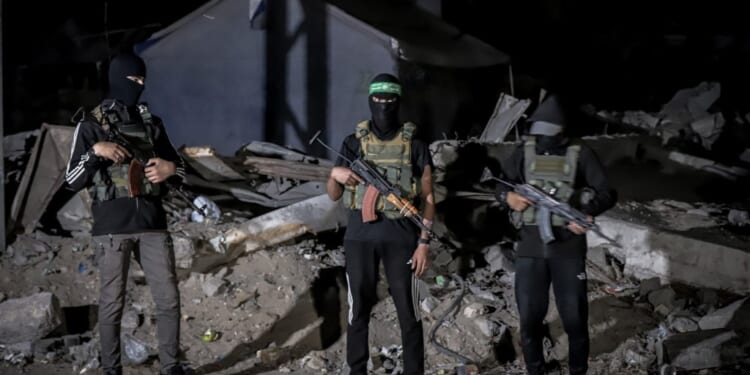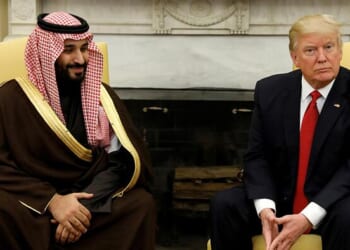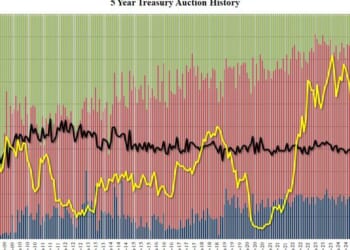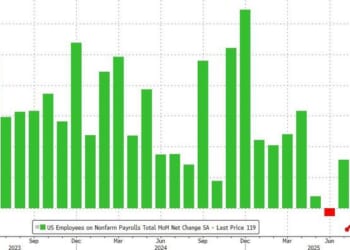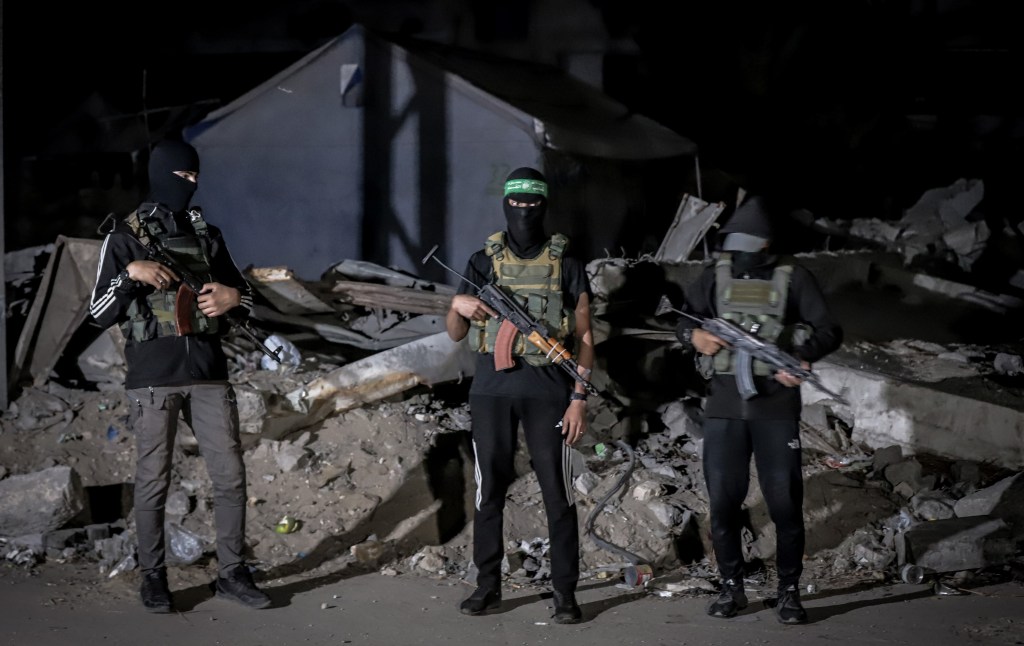
In a square in Gaza City this week, seven men were shot dead in front of a crowd. There was no trial, no evidence, and no appeal—just masked gunmen forcing the victims to their knees before opening fire. Across the city, similar scenes played out for the entire world to see: men shot in the street, bodies dumped in alleys and paraded on the back of pickup trucks, and entire families accused of complicity with Israel and warned not to oppose Hamas.
Even though the terrorist group has been weakened by two years of catastrophic war, its members are attempting to send a clear signal: We’re still in charge, and ready to take back control of Gaza.
Such is the brutal reality of the long-awaited “day after.” The war between Israel and Hamas has been paused, hopefully for the final time. Israeli troops have withdrawn to the agreed ceasefire line. Large volumes of aid are flowing unimpeded into the Strip. But the battle over what comes next is just ramping up. It is a struggle ultimately over the right to define Gaza’s future: Will the territory become a prosperous, modern, and peaceful place as envisaged by the Gaza peace plan, or will it continue down the twisted path of a jihadist enclave, militarized and under siege?
Hamas has been militarily broken down. Its rocket stockpiles are depleted. Many of its most experienced leaders and commanders—including the likes of Mohammed Deif, Yahya Sinwar, and Abu Obeida—are dead. Large swaths of Gaza’s vast network of tunnels—the subterranean arteries of its war machine—have been demolished by Israeli bombing. And yet, for all that destruction, the terrorist army refuses to go quietly into the night. Hamas is still feverishly trying to maintain a grip on Palestinian society.
And it may have the capabilities to do so. Hamas retains much of its light arms and has gained new, enthusiastic recruits from among Gaza’s population, many of them radicalized during the war in the wake of displacement, the destruction of their homes, or the death of family members. This scenario is precisely the one many Palestinians feared when talk of a postwar Gaza began: that the day after would not be a new dawn but a replay of the same grim story—a battered Hamas, momentarily diminished, consolidating power all over again.
The Trump administration’s new plan for Gaza—a ceasefire, the release of remaining hostages, Israel’s withdrawal, and a technocratic interim government backed by international actors—is, on paper, the most ambitious blueprint yet for a post-Hamas future. It ties reconstruction to disarmament and insists that Hamas’ senior leadership must leave the territory entirely.
Both Israel and Hamas have signed up to the plan, which has led to the current ceasefire. But for the latter, a ceasefire is not a peace. Hamas considers the agreement in the terms of classical Islamic jurisprudence, as a hudna: a temporary break in fighting to be broken at some unspecified point in the future. For Hamas, every lull in violence is simply an opportunity to prepare for the next war, and the one after, and the one after that until Israel is destroyed. Such is the essence of Hamas’ ideology, its political identity, and its most deeply held belief—resistance until victory against the enemies of Islam, including Jews, and all other non-believers.
Hamas leader Ghazi Hamad made this goal very clear in the wake of October 7, when he explicitly laid out Hamas’ long-term strategy: “The Al-Aqsa Flood is just the first time, and there will be a second, a third, a fourth,” he said, using Hamas’ term for the massacre. “Israel is a country that has no place on our land. We must remove that country.”
After two years of war, Hamas is now trying desperately to convince Gazans that it remains the guardian of their dignity and defiance—and that any alternative to its rule would be surrender.
Since seizing Gaza from the Palestinian Authority in 2007, Hamas has dominated the society through a blend of fear and coercion. Long before October 7, peaceful protests over electricity shortages, unemployment, and Hamas’ authoritarian rule were suppressed through brutal crackdowns. Palestinian opposition to Hamas has been violently extinguished before. And unless we are very careful, it can happen again.
Hamas’s military defeat alone will not deliver political transformation, which requires dismantling the machinery of repression that allowed Hamas to rule for two decades. That means stripping the group not just of weapons, but of control over Gaza’s policing and any forms of political power and social control. It means building alternative Palestinian leadership, so that the departure of Hamas is not a power vacuum but a transfer to more peaceful hands.
Gaza’s reconstruction cannot be treated as an apolitical project. Aid and rebuilding must work to support political reform. Influential regional powers that previously sheltered or financed Hamas and its leadership—including Qatar, Turkey, and Iran—must be prevented from trying to reconstitute the group under a new banner, and allowing them to continue their mission of jihad.
None of this will be easy. Hamas is deeply enmeshed in Gaza’s social fabric on both a practical and ideological level. Many Palestinians simply do not see an alternative; Hamas retains some popular support in Gaza. But the stakes could not be higher. Palestinians, Israelis, and the wider world face a stark choice: Embrace a future defined by self-determination, coexistence, and opportunity—or allow Palestinians to remain the captives of a theocratic death cult that promises only endless war, chaos, and deeper misery.
A change is not only essential for Palestinians in Gaza. It is also essential for Israel and the Western world. This conflict is a festering sore that is not only a grave danger to Israelis and Palestinians, but also to the political stability of the region and the global economy. Hamas and its supporters are not just enemies of Israel—they want to tear down Western civilization in its entirety. They cannot be allowed a chance to succeed.
In spite of Hamas, there is great appetite in Gaza for peace. We saw this in the anti-Hamas protests that took place there earlier this year, when thousands of Palestinians risked reprisals to march for the end of Hamas rule and an end to the war.
Now the question is whether Gazans, and the international actors who claim to support them, will seize this fragile moment to build something new—or allow Hamas to turn the day after into yet another chapter of the same, unending tragedy.

